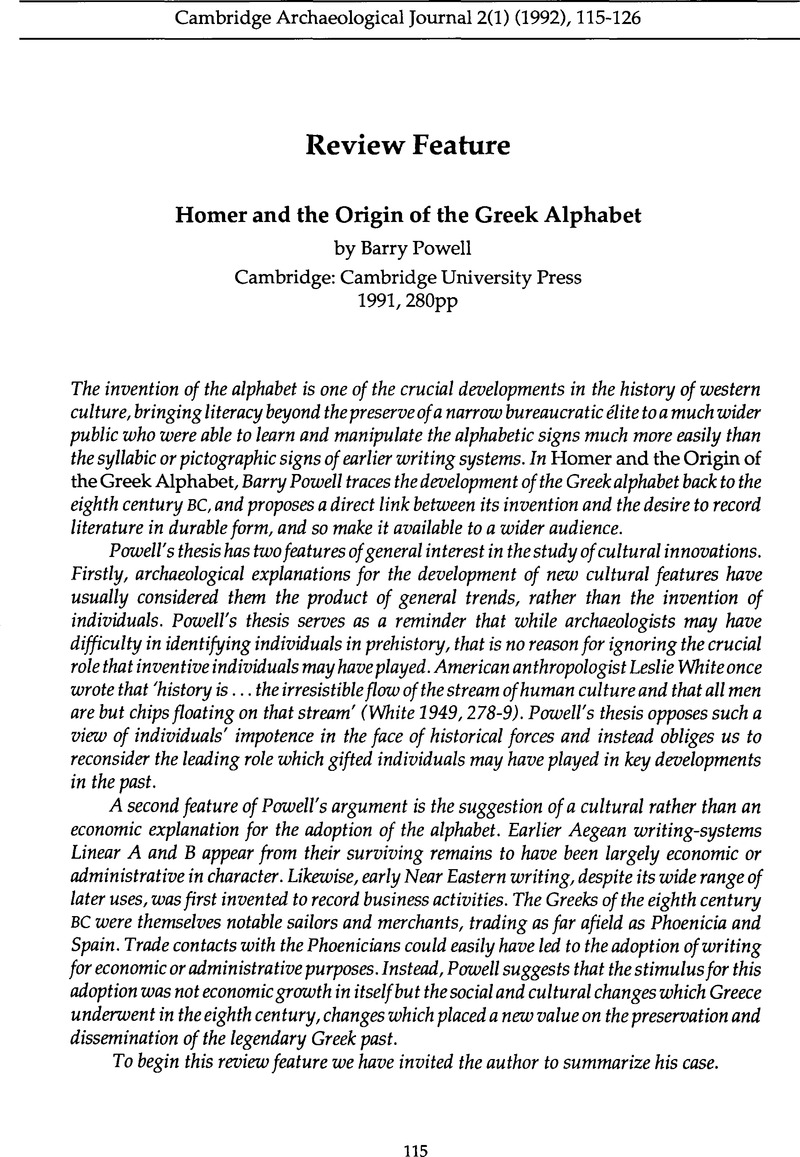Crossref Citations
This article has been cited by the following publications. This list is generated based on data provided by Crossref.
Sherratt, Susan
2003.
Visible writing: questions of script and identity in Early Iron Age Greece and Cyprus.
Oxford Journal of Archaeology,
Vol. 22,
Issue. 3,
p.
225.
2012.
The Complete Archaeology of Greece.
p.
519.



